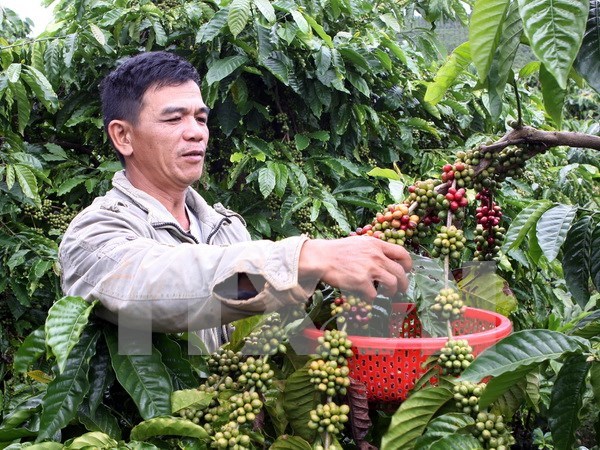Credit policy helps tackle poverty
Credit policy plays the key role in the country’s poverty reduction efforts with its main target being poor households and ethnic minority groups.
 Illustrative image (Source: VNA)
Illustrative image (Source: VNA)Over the past years, credit packages have been designed for poor households and those from ethnic minority groups, helping them to improve production and income themselves.
Getting support credit through the Vietnam Bank for Social Policies (BVSP), borrowers are required to take responsibility for ensuring the effectiveness of the capital.
BVSP Deputy General Secretary Bui Quang Vinh said that as of the first quarter of this year, total activated capital of the bank was 173.8 trillion VND, up 7 percent over the end of 2016, while total outstanding balance of credit programmes reached over 163 trillion VND distributed to more than 6.8 million poor people and policy beneficiaries.
The credit helped reduced the ratio of poverty by 2 percent each year to 4.25 percent in 2015 from 14.2 percent in 2010.
The percentage of poor households in poor districts also fell to 28 percent in 2015 from 58.33 percent in 2010, or an average 6 percent annually.
From 2016, Vietnam started applying new multi-dimensional poverty standards for 2016-2020, for which a poor household in rural areas is defined to have the lowest income of 700,000 VND per person per month, and 900,000 VND per person a month for those in urban areas.
With the new standards, the ratio of poverty in the country increased 10 percent, noted Vinh who said that many difficulties and challenges have faced poverty reduction efforts, requiring suitable adjustments in the credit policy.
In 2017, the BVSP was assigned to post an 8 percent credit growth compared to 2016, equivalent to about 11.3 trillion VND.
According to deputy head of the National Assembly’s Committee for Social Affairs Bui Sy Loi, the increase of credit resources for the implementation of sustainable development goals is necessary.
He held that along with support in credit, it is crucial to strengthen coordination between credit policies and support in technology transfer, thus helping the poor to access capital and promote production.
Loans should also go along with production guidance, support and supervision, he stressed.
Nguyen Manh Thien, Vice Director of the BVSP’s Department for Credit for the Poor, said that the poor and policy beneficiaries often lack business and financial management skills, which make them more vulnerable to impacts of natural resources and other incidents.
The bank has also exerted efforts to complete its policies and mechanisms, thus helping minimize the poverty relapse rate.
Many experts said that the bank must design specific credit policies for each localities and regions with different interest rates, while strengthening communications to change the poor’s mindset and inspire them to overcome their difficulties to get rid of poverty.-VNA













